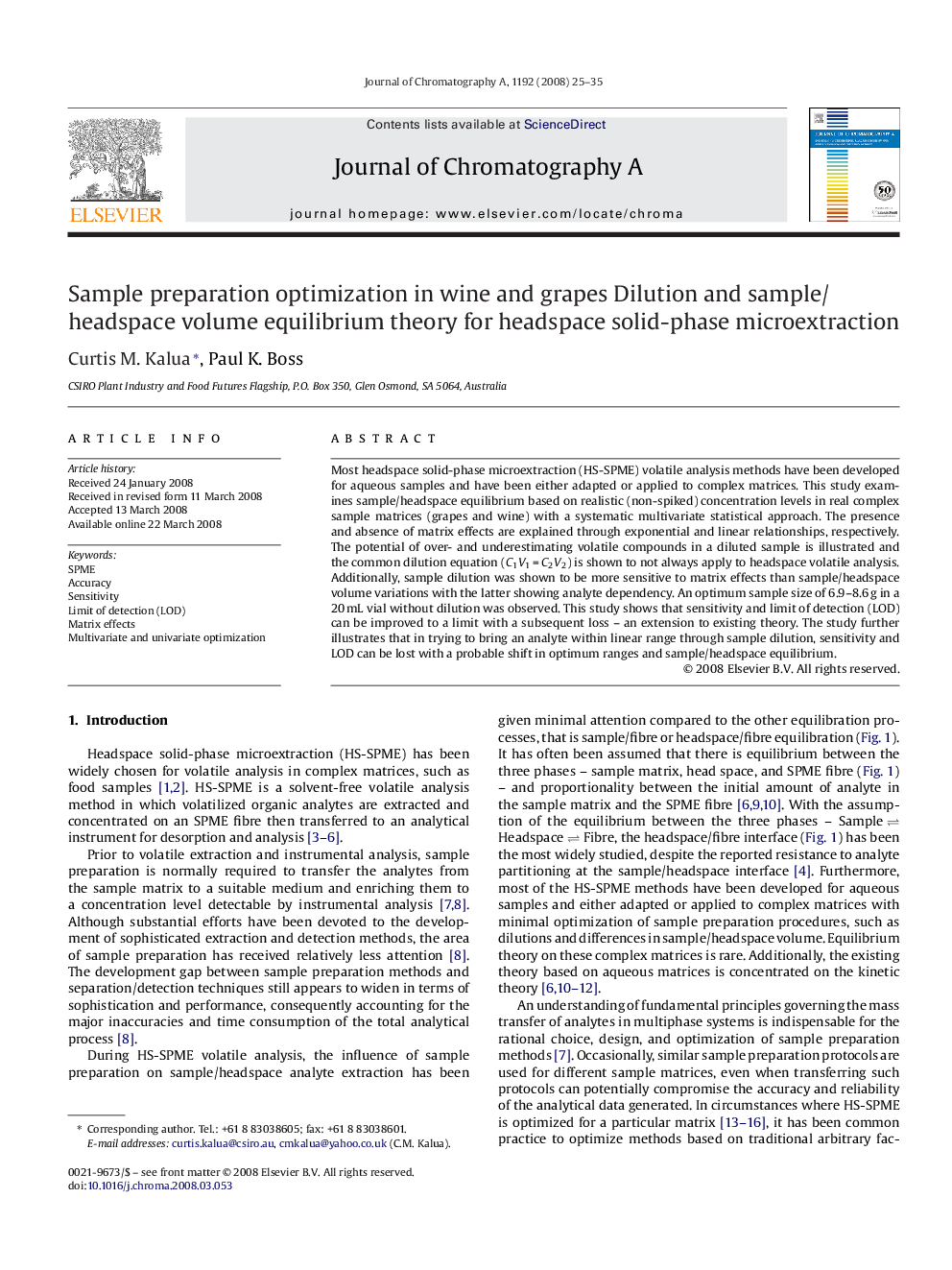| Article ID | Journal | Published Year | Pages | File Type |
|---|---|---|---|---|
| 1207130 | Journal of Chromatography A | 2008 | 11 Pages |
Most headspace solid-phase microextraction (HS-SPME) volatile analysis methods have been developed for aqueous samples and have been either adapted or applied to complex matrices. This study examines sample/headspace equilibrium based on realistic (non-spiked) concentration levels in real complex sample matrices (grapes and wine) with a systematic multivariate statistical approach. The presence and absence of matrix effects are explained through exponential and linear relationships, respectively. The potential of over- and underestimating volatile compounds in a diluted sample is illustrated and the common dilution equation (C1V1 = C2V2) is shown to not always apply to headspace volatile analysis. Additionally, sample dilution was shown to be more sensitive to matrix effects than sample/headspace volume variations with the latter showing analyte dependency. An optimum sample size of 6.9–8.6 g in a 20 mL vial without dilution was observed. This study shows that sensitivity and limit of detection (LOD) can be improved to a limit with a subsequent loss – an extension to existing theory. The study further illustrates that in trying to bring an analyte within linear range through sample dilution, sensitivity and LOD can be lost with a probable shift in optimum ranges and sample/headspace equilibrium.
